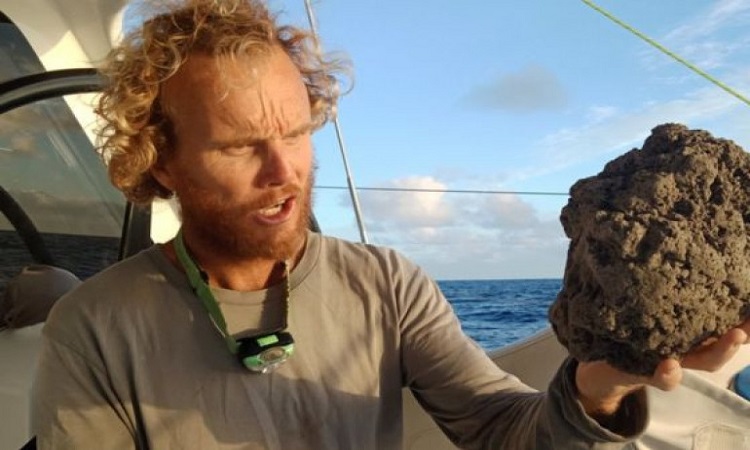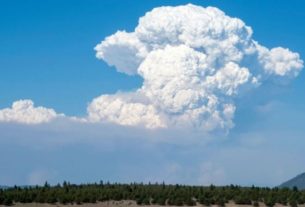A few days ago, sailors sailing in the southwestern Pacific noticed a strange structure floating on the surface of the ocean. By recovering some pieces, and sniffing the smells, they quickly realized that they were actually volcanic stones, expelled from the depths.
Off the coast of Fiji, sailors on board a catamaran have noticed on the surface of the water the formation of a vast “raft” of volcanic rocks. This, according to the satellite surveys carried out thereafter, would extend over more than 150 square kilometers. This represents about 20,000 football fields. These rocks, most of them hand-held, seemed filled with holes and pockets of trapped gas giving them buoyancy in the water. And, by the way, a strong smell of hydrogen sulfide. Many images have since been taken, including those of volcanologist Simon Carn of Michigan Technological University. We discover then a gigantic raft of pumice stone deforming with the waves.
The fruit of an underwater eruption
These structures are actually the result of a major underwater eruption, probably a few days earlier. After analyzes, researchers managed to isolate the suspect: a volcano that, for the moment, has no name. You will find it near the Tongan archipelago, about 40 meters deep. When it woke up, the volcano would have emitted a silica-rich magma that, by cooling rapidly, would have formed pumice.
Note that this is not the first time this suspect is apprehended. He had already distinguished himself in 2001 with the formation of a first “raft” of natural pumice stones in the region. The fact that he reoffends should normally lead the researchers to finally baptize him.
A boost for corals
This raft, in motion, should continue its course in the coming weeks. It should reach some islands on the way to the east coast of Australia, annoying some fishermen. On the other hand, it does not constitute a danger for local human populations, and should even be beneficial to the surrounding fauna. For the Great Barrier Reef, in particular. The researchers point out that this type of training represents a favorable habitat and means of transport for millions of marine organisms. Of which corals.
“Every pumice is like its own little island,” says Scott Bryan, a geologist at the Queensland University of Technology. This raft could make it possible to “repopulate the Great Barrier Reef”, which it will reach by the end of November. Just in time for the big coral spawning events. Let’s look at this as a little help from the nature that these organizations badly needed.




